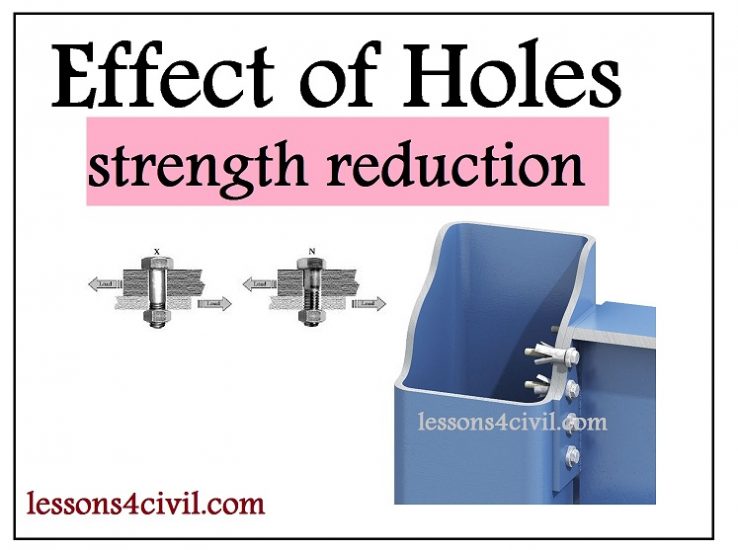Strength reduction because of holes
Effect of holes in beams
Obviously, any reduction in the cress section of steel members reduces the overall strength of the member. However, structural engineers need some mathematical terms to quantify this reduction. In this article I talk about the effect of holes in steel beams in terms of tensile, compressive and bending capacity.
the effect of holes in tensile capacity of beams
the presence of hole can sharply reduce the tensile capacity of the members. Generally there different methods to create a hole for bolting purposes. In punching method, the hole is created a bit larger than the diameter of the bolt. However punching method is inexpensive, but it also damages the surrounding area of the hole. As a result if the hole is created by punching we need to assume that the hole is 3 millimeters larger than bolt diameter to consider the effect of punching. On the other hand, some methods such as honing machine and drilling, do not damage the adjacent area of the hole. so if the hole is created by these method, we only increase its diameter by 1.5 millimeter I our calculations.
the effect of holes in compressive capacity of beams
in design process of compressive members which are attached by bolts or rivet, the holes are securely filled by the body of the bolt. So no reduction in the overall cross section is needed. In other words the compressive capacity of steel members is not going to be reduced because of bolt and rivet holes.
the effect of holes in bending capacity of beams
when the area of the hole are relatively small they do not significantly reduce the bending capacity of the member. According to AISC code, if the area of the hole is more than 15 percent of wing area, then the bending capacity must be calculated based on net area of the cross section.



Comments